Book Report “New Sculpture” – Time Travel to The Renaissance Society and the Summer of 1986
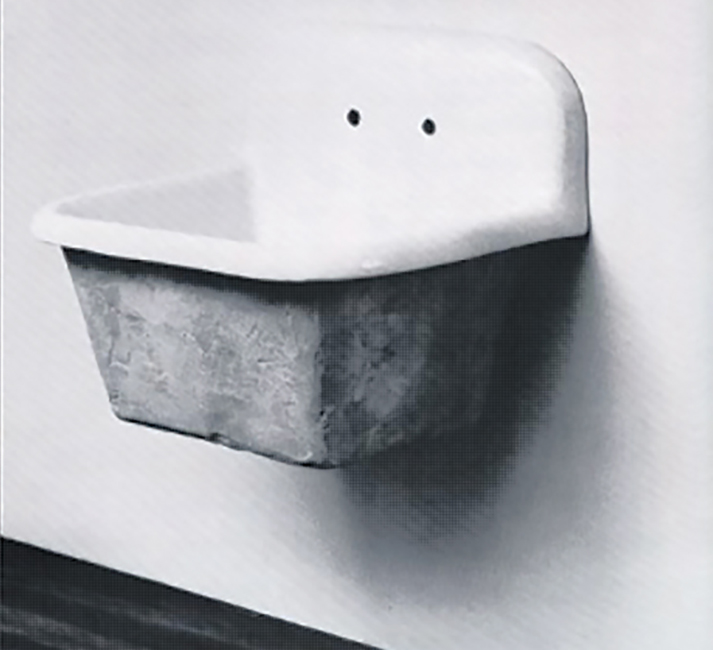
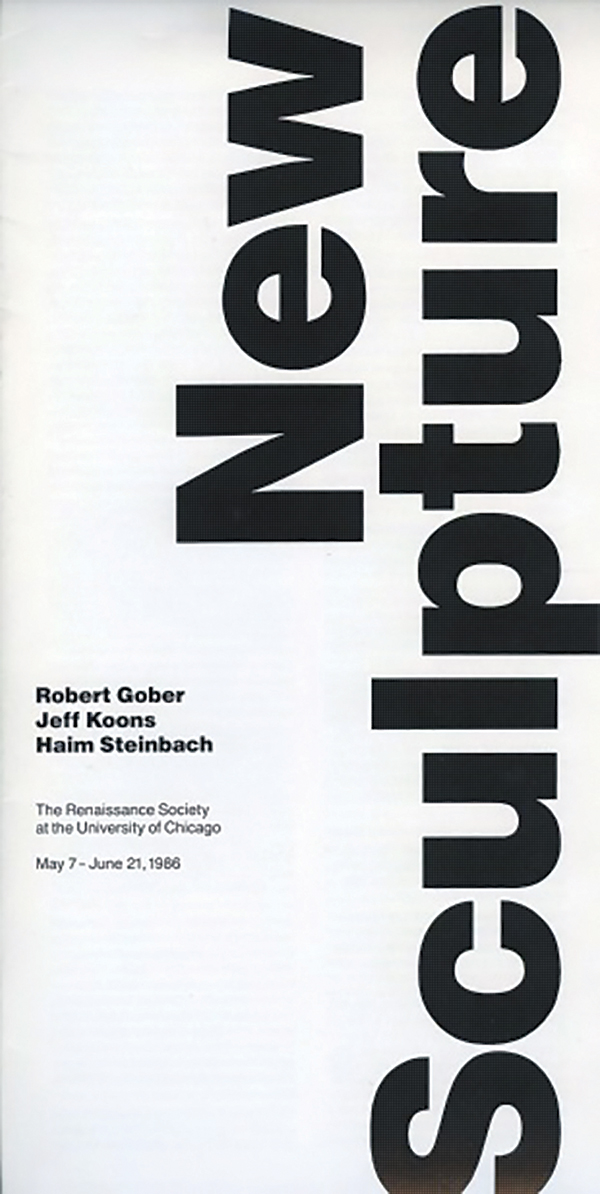
The cover of New Sculpture
By BIANCA BOVA
In the Summer of 1986 the Renaissance Society mounted an exhibition entitled New Sculpture, featuring the work of three artists: Robert Gober, Jeff Koons, and Haim Steinbach. Curator Gary Garrels (who acknowledges having benefited from the assistance of an astonishing trifecta of counselors to the show: Richard Hoblock, Jerry Saltz, and Christopher Wool) characterizes it as follows: “There is a continuum set down here with Gober and Steinbach anchoring the ends and Koons balanced in the middle.” This is as discernable in the catalog as it seems to have been in the exhibition itself [n.b. I did not see this exhibition firsthand. Not having been born until 1992 I, once again, missed the party].
The best catalogs are not just repositories of the collected photographs, images, and essays from a show, printed and bound. They are something at once companionate and singular. They carry the exhibition title, and at least something of its spirit. They are often the only record that remains after the show has closed.
The catalog for New Sculpture is slim and strange, and my copy of it numbers among the prized possessions of my bookshelf. Measuring at 12 ⅜” by 6” it is a staple-bound and tightly delimited ten pages, inclusive of acknowledgements; a staff and board directory; a curatorial essay; the artists’ curricula vitae; and six black-and-white images, two of which are luscious full-page, full-bleed images of Gober’s The Ascending Sink and Koons’ New Hoover Convertible.
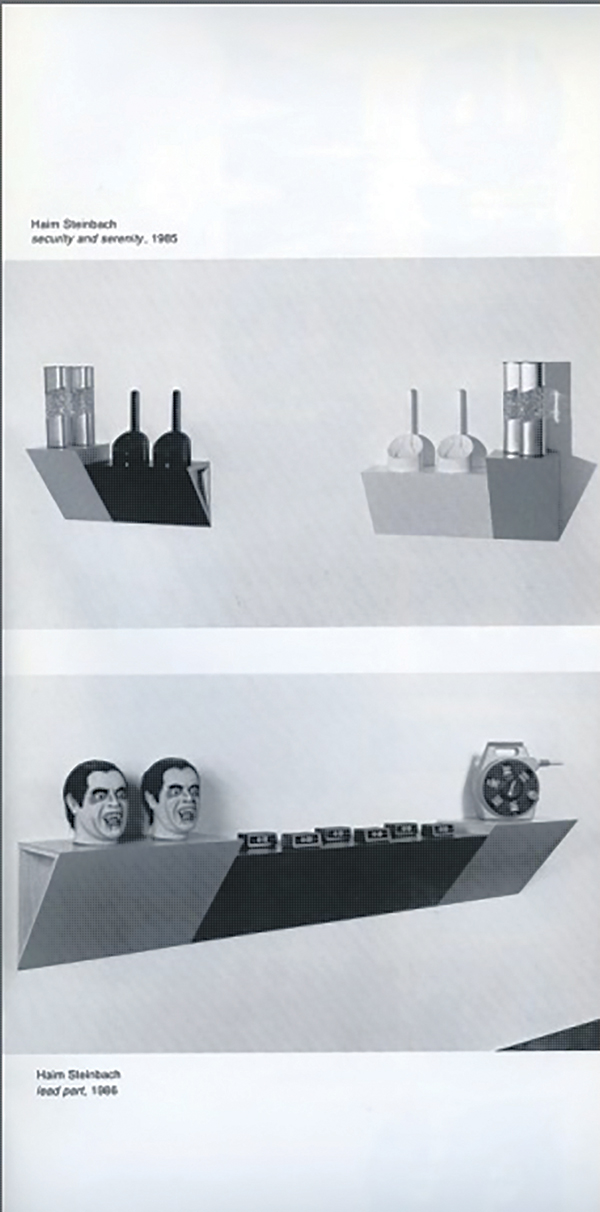
Top: Haim Steinbach, security and serenity, 1985
Bottom: Haim Steinbach, lead part, 1986
It was designed by the late Michael Glass, a seminal and dominant force in shaping the aesthetic identity of the Chicago art world in the late twentieth century. His influence remains legible in the iterative identities of the Museum of Contemporary Art, Chicago; in the logo that graced the entryway to Rhona Hoffman Gallery until the day it closed; and in the decades of work produced by his protégé, the late Jason Pickleman. The catalog for New Sculpture is as thoughtful a piece of his work as ever was made. The brush of the capital “S” in Sculpture against the lower edge of the cover, the unbroken rhythm of the two-column layout that repeats what it faces in Gober’s sinks, Koons’s vacuum cleaners, and Steinbach’s rubber Dracula heads, the austerity of the sans-serif fonts used throughout (which my untrained eye is too dull to correctly identify)–all thoughtful, careful gestures, executed with precision by the teams at Word City typesetters and Thomas Graphics printers. Its spareness begets clarity, its clarity is from where its communicative authority derives.
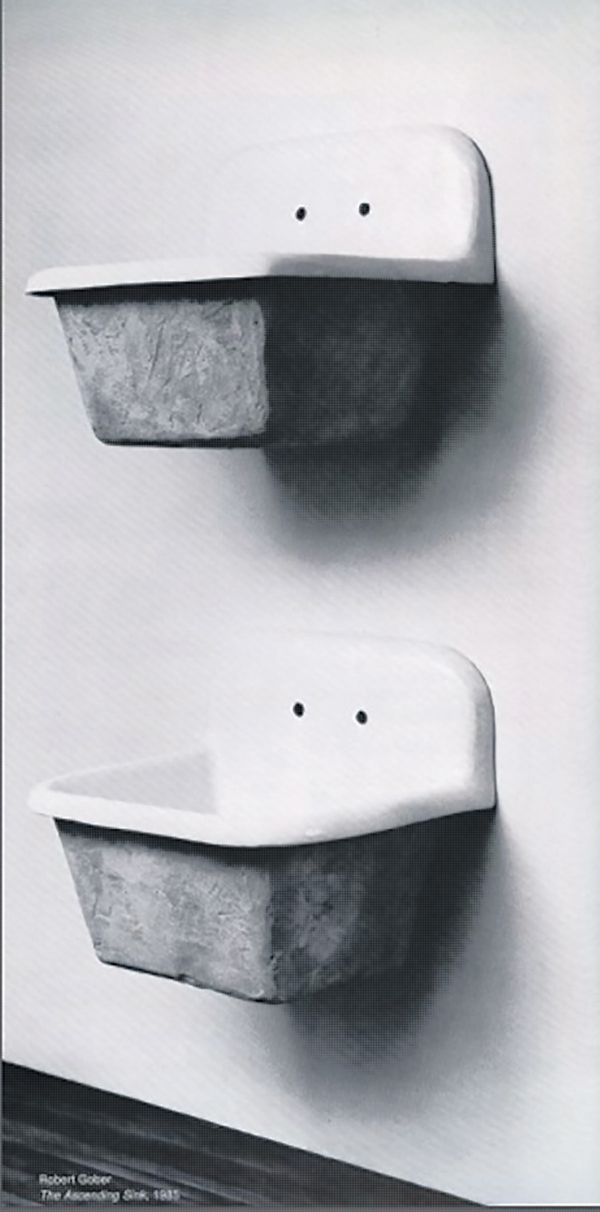
Robert Gober, The Ascending Sink, 1985
The acknowledgements, penned by longtime Renaissance Society Director Suzanne Ghez (who was then roughly a decade into her tenure) buries the lede somewhat. New Sculpture constituted the first museum showing in the Midwest of these three artists. The lenders list is a veritable who’s who of relevant galleries of the day: Paula Cooper; International With Monument; Feature; Rhona Hoffman; Donald Young; the list goes on. Likewise, the CV’s of the artists are an astonishing snapshot of early achievement. Koons has just five solo shows to his name, and Gober only three, while Steinbach’s entry (the senior of the group) reflects his just-recent accession into the Saatchi collection. To read through them is to observe careers on the brink of tipping into greatness, poised to claim their place in the vast swathe of art history that would come to define those years at the end of the century.
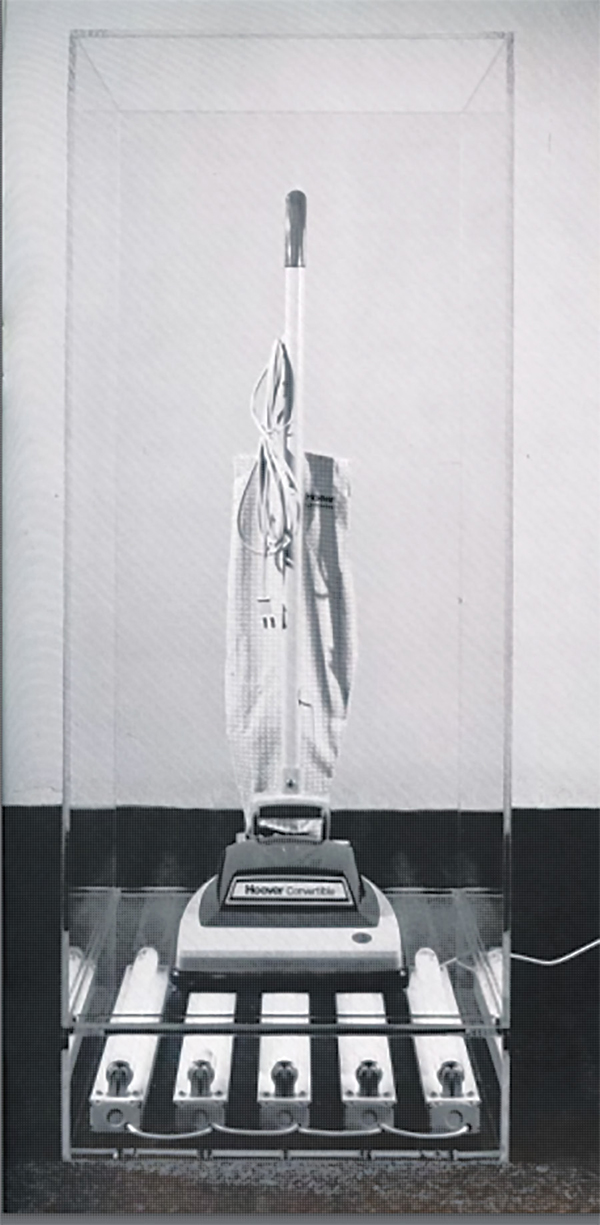
Jeff Koons, New Hoover Convertible, 1980
Garrells’ catalog essay is rigorously researched, conceptually airtight, and littered with quotes from the three artists that it’s noted are “taken from informal conversations between the artists and the author” in March of the year of the exhibition. These cut through the antiseptic overtones of the publication keenly.
“It’s a prerequisite that good art demands that you wonder, ‘what the hell is this?’” Gober says, “People are afraid to enter that state, and so they come up really fast with reasons, equations for things.”
On the subject of connoisseurship of consumer goods, Steinbach pushes gently back with the declaration, “I’m not involved with that kind of thing.”
Koons, for his part, notes, “If I feel I can preserve the integrity [of an object], or most of it, then I say go ahead. If not, then I just have to work in another medium or find a different object.”
Herein lies the balance; the stark power of Glass’ design and the harmony of Garrells’ curatorial eye anchoring the ends, and the humanizing inclusion of the artists’ own casual voices (all too frequently absent from these publications, then as is unfortunately, equally true now) holding fast in the center. A final twin, a mirror to the spectrum of Gober-Koons-Steinbach as Garrels articulates it. The catalog for New Sculpture is a self-contained unit; an all-encompassing gesture that serves conceptually as both complete sentence and as punctuation.
#
New Sculpture
The Renaissance Society at the University of Chicago
1986, 10 pp., 6 b/w illustrations, paperback
ISBN 0-941548-11-2
OUT OF PRINT
Download a free PDF here






